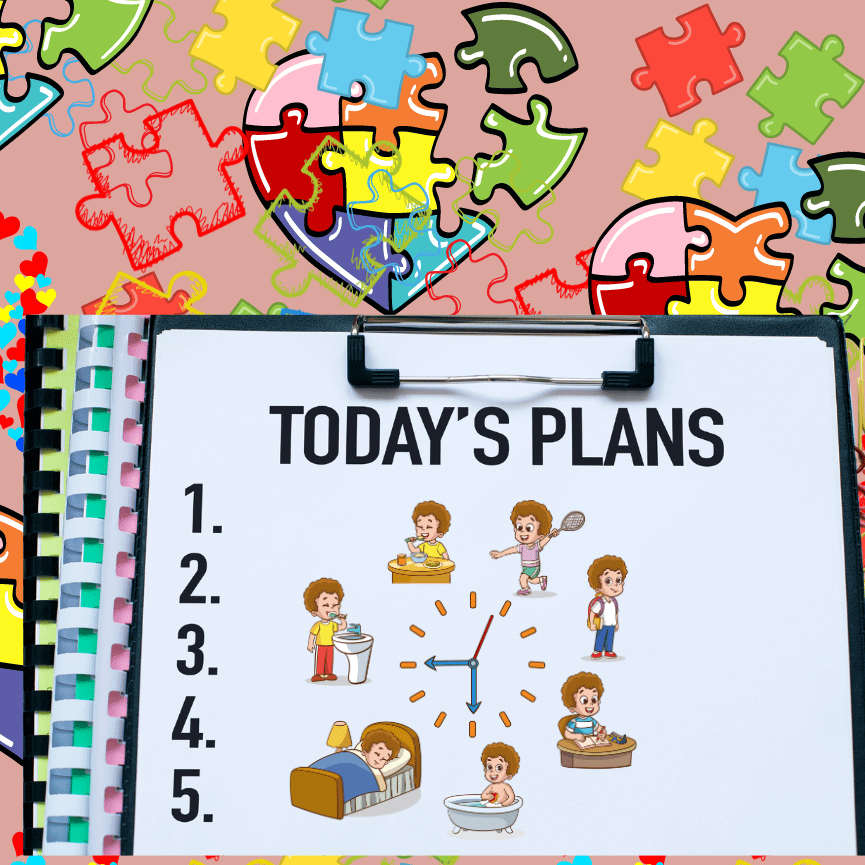
- Feb 04, 2025
- 155 Views
- 0 Comments
Effective Daily Routines For Children With Autism
Daily Routines That Support Children With Autism: Tips for Caregivers
Routines play a crucial role in the lives of autistic children. They provide a sense of security, predictability, and structure that helps reduce anxiety and stress. For caregivers, establishing and maintaining daily routines is not just about creating order; it’s about fostering an environment where autistic children can thrive. In this article, we'll explore the importance of daily routines, provide practical tips for caregivers, and offer strategies to support autistic children in their daily lives.
Understanding Autism and Daily Routines
What is Autism?
Autism, or Autism Spectrum Disorder (ASD), is a developmental disorder characterized by differences in communication, behavior, and social interaction. While each autistic individual is unique, many share certain key characteristics.
Key Characteristics of Autism
- Communication Challenges: Autistic individuals may have difficulty with verbal and non-verbal communication.
- Repetitive Behaviors: Repetitive actions, such as rocking or hand-flapping, are common.
- Sensory Sensitivities: Many autistic individuals are highly sensitive to sensory inputs, such as loud noises or bright lights.
- Preference for Routine: A strong preference for routine and resistance to change is typical.
The Role of Routine in an Autistic Child’s Life
Routines are essential for autistic children because they create a predictable environment. Predictability helps reduce anxiety, making it easier for the child to navigate daily life.
How Routine Helps Reduce Anxiety
When an autistic child knows what to expect, they feel more in control of their surroundings. This predictability can lead to decreased stress and fewer behavioral challenges.
Establishing a Morning Routine
The Importance of Consistency in Morning Routines
A consistent morning routine sets the tone for the rest of the day. It helps the child transition from sleep to wakefulness and prepares them for the activities ahead.
Step-by-Step Guide to a Structured Morning
Wake-Up Time and Morning Hygiene
Start the day at the same time each morning. A predictable wake-up time, followed by a simple hygiene routine (like brushing teeth and washing the face), helps the child feel grounded.
Breakfast and Medication
Breakfast should be at a consistent time, with familiar foods that the child enjoys. If the child requires medication, incorporating it into the morning routine ensures it’s not forgotten.
Preparing for School or Daily Activities
Prepare for the day by setting out clothes and packing bags the night before. This minimizes morning chaos and ensures a smooth transition out the door.
Creating a Predictable Daily Schedule
Visual Schedules and Timetables
Visual schedules, such as picture cards or written lists, are powerful tools for autistic children. They can see what’s coming next, reducing anxiety about the unknown.
Incorporating Breaks and Relaxation
Regular breaks are essential to prevent overwhelm. These can include sensory breaks, where the child engages in activities that help them reset and recharge.
The Role of Sensory Breaks
Sensory breaks might include activities like swinging, playing with fidget toys, or listening to calming music. These breaks help the child manage sensory input throughout the day.
Balancing Structured Activities with Free Time
While structure is important, free time allows the child to relax and explore their interests. Balance is key to preventing burnout and encouraging creativity.
Managing Transitions During the Day
Why Transitions Can Be Challenging for Autistic Children
Transitions, or moving from one activity to another, can be particularly difficult for autistic children. The unpredictability of change can lead to anxiety and resistance.
Strategies to Ease Transitions
Using Timers and Warnings
Using a timer or giving a five-minute warning before a transition can help the child prepare mentally for the change.
Providing Visual or Verbal Cues
Visual or verbal cues, like a picture of the next activity or a simple explanation, can make transitions smoother.
Establishing a Calm Evening Routine
The Importance of a Wind-Down Period
Evenings should include a wind-down period, where the child can relax and prepare for bed. This helps signal that the day is ending.
Creating a Bedtime Routine
Screen Time Limits
Limiting screen time before bed is important. Too much screen time can overstimulate the child and make it harder for them to fall asleep.
Bedtime Hygiene and Storytime
A consistent bedtime routine might include brushing teeth, changing into pajamas, and reading a story. This routine signals to the child that it’s time to sleep.
Encouraging Independence Through Routines
Assigning Simple Tasks
Involving the child in their routine by assigning simple tasks, like setting the table or picking out clothes, can encourage independence.
Positive Reinforcement and Rewards
Positive reinforcement, such as praise or a small reward, can motivate the child to follow the routine.
Building Confidence and Self-Esteem
As the child masters these tasks, their confidence and self-esteem grow, fostering a sense of accomplishment.
Addressing Changes and Flexibility in Routines
How to Handle Unexpected Changes
Life is unpredictable, and sometimes routines will be disrupted. Preparing the child for these changes is essential.
Preparing Your Child for Upcoming Changes
Role-Playing and Social Stories
Role-playing and social stories can help the child practice how to handle unexpected changes, reducing anxiety when they occur.
The Role of Caregivers in Maintaining Routines
Collaboration with Educators and Therapists
Caregivers should work closely with educators and therapists to ensure that the child’s routines are consistent across all environments.
Involving Family Members in the Routine
Consistency is key, so involving other family members in the routine can help reinforce it.
Self-Care for Caregivers
Maintaining routines can be challenging, so caregivers must take care of themselves, too. Self-care is vital to avoid burnout.
Daily routines are a powerful tool in supporting autistic children. They provide structure, reduce anxiety, and help children thrive in their daily lives. Caregivers play a crucial role in establishing and maintaining these routines, ensuring that they are consistent, predictable, and supportive. By following the tips outlined in this article, caregivers can create a nurturing environment where autistic children can flourish.



Comments - 0 comments till now